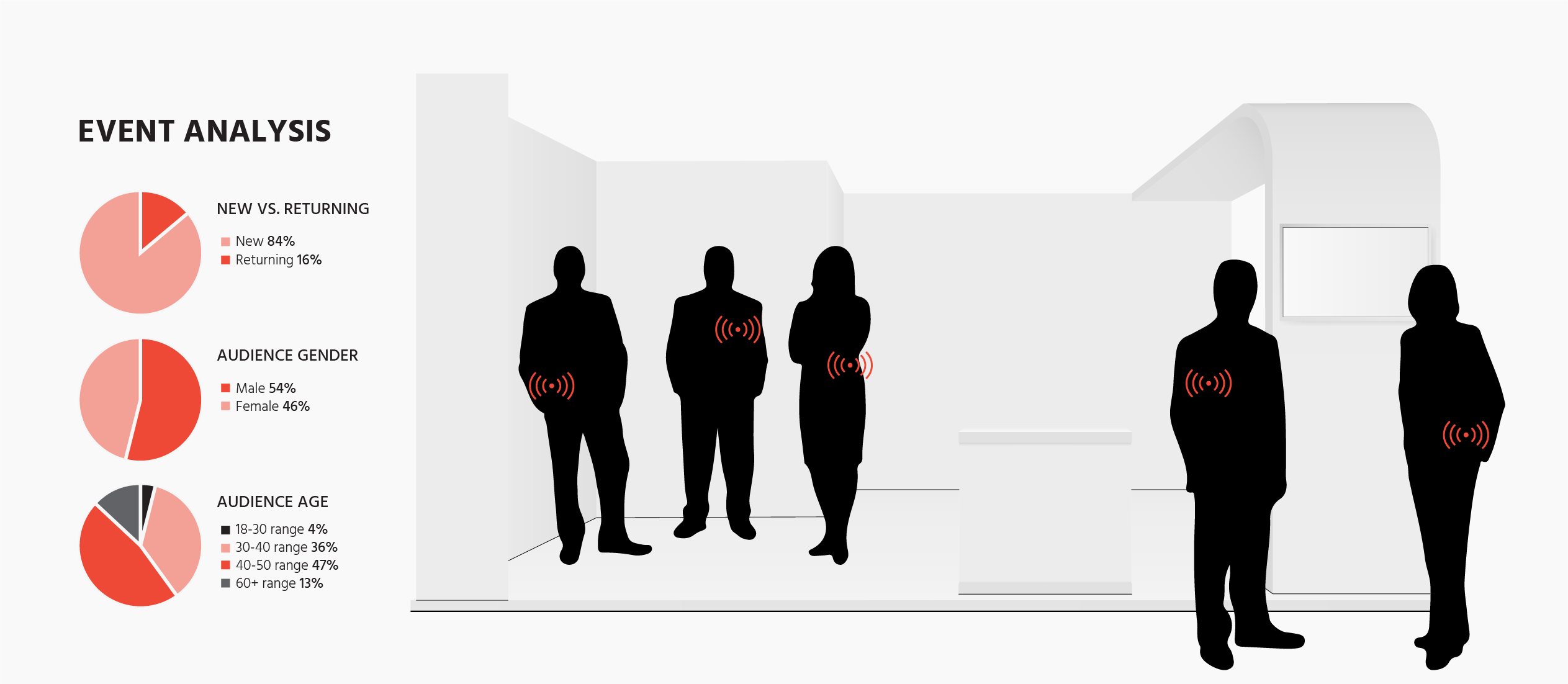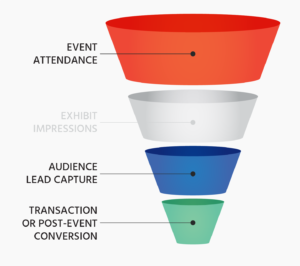Marketers responsible for in-person events such as trade shows, conferences, or consumer brand activations, have always wrestled with capturing data to prove return on investment. Across different industry verticals, marketers struggle to capture impression and engagement metrics to evaluate event performance success accurately.
Existing technologies such as scanning credentials or collecting contact information with lead capture forms provide a baseline level of direct engagement. But there’s been no way to capture the impressions from the presence of a booth, being on exhibit hall floor or other forms of engagement. Old-school methods such as attributing sales and tying that to downstream revenue were speculative at best. These manual processes make it especially difficult to capture engagement at scale.
While driving revenues is the ultimate goal of event marketing, there are a number of ancillary benefits along the way. Marketers also seek to drive impressions and engagements, metrics that will return benefits over the long term. It can be challenging to attribute a sale to an event six months later. But marketers must track those metrics to develop realistic expectations for their event marketing efforts.
Track Event Metrics With Smart Technology
Over the past two years, IMS has created a service area MerchTech™. It’s a growing collection of platforms, tools, methodologies and services that enables markets to engage and, most importantly, measure audience dynamics. That translates into marketers having an invaluable insight into the impact of their POS displays and audience engagement and behavior.
That technology is now being adapted to the event space. It revolutionizes marketers’ abilities to accurately measure and analyze event performance, and optimize their event execution in the future based on this data. It’s based on solutions used in retail merchandising to measure consumer engagement at the point of sale.
The system implements real-time digital capture of event visitors using their cell phone “pings” as proof of location and proximity to the event display or booth. Video sensors capture visitor images and use artificial intelligence to measure visitor demographics and sentiment. Users receive insights through a customized reporting platform so they can drill down to specific time periods and exhibits across events or focus on one in particular.

This technology has been proven in individual brand conferences as well as multi-tenant event spaces. The go-to-market strategy can encompass individual brands as well as shared experiences among brands or event organizers who could offer it as a premium service.
3 Benefits of Event Space Data
Generate Sales
For events with a sales goal, the data captured through audience measurement technology can help attribute sales to engagements with specific attendees. You can get an accurate view of the sales funnel, with conversions at each stage, and plan your sales strategy accordingly.

Without Audience Measurement Tools, Marketers would have a difficult time evaluating how successful their exhibits are at converting Impressions into Leads.
Accurately capturing the value of sales generated at events can reveal the full activation ROI, which has been difficult to account for in the past. Brands can take the guesswork out of this vital marketing channel.
Develop Prospects
Tracking booth engagements is critical for developing the sales pipeline. Depending on the length of the sales cycle, a trade show contact could take years to come to fruition. Tracking booth visits and customer engagement are potent tools for measuring the success of show contacts as well as nurturing post-show follow-up.
Tracking data can reveal how many attendees actually engaged with the booth and be cross-referenced with requests for more information to measure the effectiveness of the marketing plan.
Brand Awareness
Audience measurement technology provides much more in-depth insights into total audience impressions and engagement. Over the course of several days, visitors may actually engage with an activation multiple times rather than scanning their credentials, acquiring contact detail, or making a sale on a single visit. The scope of brand awareness is likely multiples of what’s been previously measured. Activation design is essential to supporting brand awareness, and video analytics are critical for tracking engagement and responsiveness to the brand message. Additional metrics such as social media mentions, site traffic and newsletter sign-ups will guide brand development.
Under the MerchTech™ service, IMS provides much more than the dataset. The program delivers deep analytic insights using aggregated data via business intelligence platforms, highlighting trends and performance in ways that might not have been immediately obvious or accessible.
Stop the Guesswork
It remains to be seen just how far-reaching the impact of COVID-19 will have on business and consumer event marketing. But one thing is for certain: Marketers are facing more limited opportunities than ever, so it’s critical they take every chance they can to prove ROI. With the right technology, users will be able to tap into tangible scientific data that’s much more powerful than merely capturing a single interaction. The data-driven insights will help brands identify the value they derive from events by reducing the speculative nature of the current methodology. This audience-measuring technology will revolutionize brands’ abilities to accurately measure and analyze event performance, and optimize event execution in the future.
Have you been looking for a way to measure the impact of your event marketing strategy? Do your customers engage the way you think they do? If you’d like the answers to those questions, IMS can assist with turnkey MerchTech™ solutions that capture critical consumer data and transform it into actionable insights.

ARTICLE AUTHOR: NICK FEARNLEY
Nick Fearnley is SVP of Technology at IMS. Nick works with IMS’ F500 clients to design in-store digital experiences for both brands and retailers, merchandising measurement, and execution technology. Previously, Nick was founder and managing director of a global SaaS digital signage company based in the UK. Nick is also a founding member of the Path to Purchase Institute’s SM2 Commission to Standardize the Measurement of Shopper Marketing.

